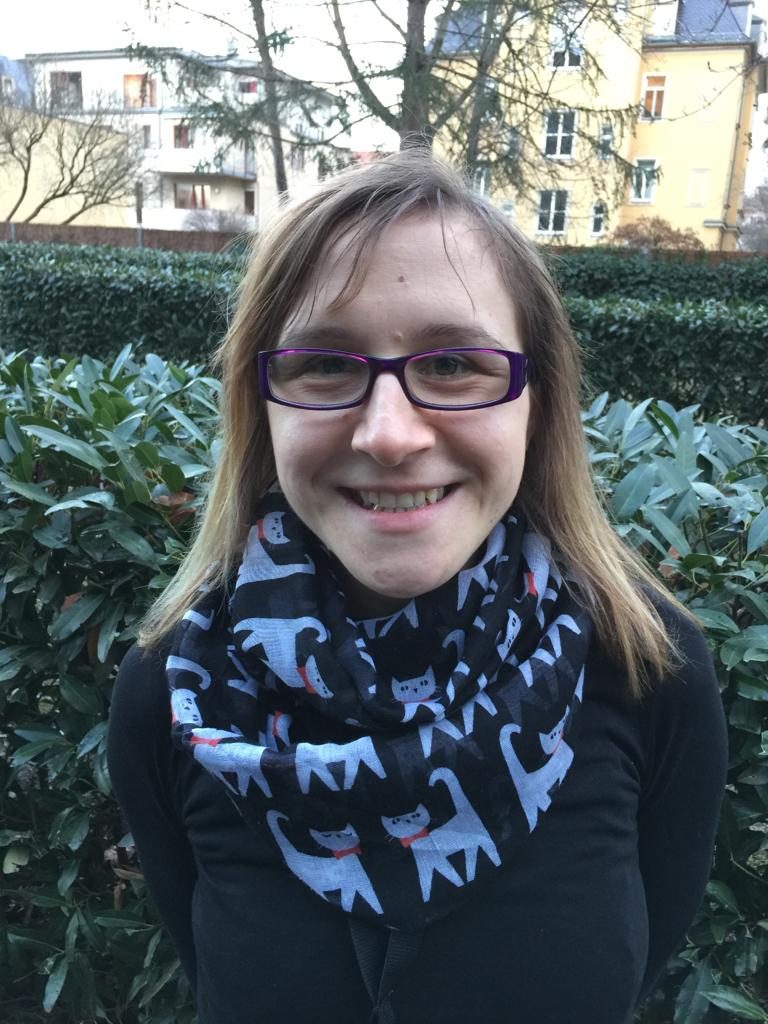We’re taking time over the following weeks to get to know the members of the GSA’s Early Career Scientist Committees. Join us every week to learn more about our 2019 early career scientist advocates.

Anna Bajur
Max Planck Institute of Molecular Cell Biology and Genetics
King’s College London
Communications and Outreach Subcommittee
Research Interest
I’m interested in how cells in our bodies communicate with each other and how they make sense of all the information they receive. My specific focus is in how cell polarity, adhesion, and mechanical forces are coordinated to allow for complex single-cell and tissue-wide behaviors—for example, during development to remodel the epithelium. Epithelial cells tightly adhere to each other, which allows them to function as a barrier. During development, epithelia undergo extensive remodeling, whereby they bend and fold to give rise to distinct structures. A key feature of epithelial cells that allows them to develop into three-dimensional tissues is their polarisation, meaning their organization is asymmetric. This asymmetry is required for junction formation and is also later maintained and refined by junctional components. This highly organized asymmetry allows for unique functions within and outside of the cell. In the context of development, these junctions, along with the adhesion they provide to adjacent epithelial cells, are important for mechanical force distribution that regulate cellular rearrangements. I was testing whether epithelial cells need to modulate forces and/or their internal polarity in order to remodel junctions.
Using Drosophila melanogaster and quantitative imaging combined with pharmacological perturbations, I found that very tight coordination and interdependence between the junctions, cytoskeleton, and cellular forces drive epithelial development. From these studies, I’ve learned to appreciate the need for interdisciplinary approaches, in particular, the powerful combination of genetics, biochemistry, and physics. Now I want to go one step further and study the role of mechanical forces in cellular behavior at the single-molecule level.
As a PhD-trained scientist, you have many career options. What career paths interest you the most?
I’m fascinated by scientific discoveries, and I can’t imagine myself working outside of research. I enjoy thinking critically, and discussing ideas with other people as well as exploring new technologies and learning new approaches. That is why I see myself working either as an independent researcher or in a fast-paced pre-clinical setting.
My training has provided me with great opportunities to expand my scientific skills, work independently, and contribute to the overall growth of a research team. My research experiences have given me insights into thinking about scientific problems from different angles, which is one of my biggest strengths. Having trained as an animal physiologist where I worked with swine and horse tissue in pre-clinical settings and neurobiology, developmental biology, and currently immuno-mechanics, I’ve learned about the value of using different model organisms including rats, mice, flies, and cell culture.
No matter which path I take, I want to support an interdisciplinary approach to science that focuses on developing technology and bridging different fields. I further seek to work in a setting that supports new and challenging ideas, which is possible both in academia and in industry.
In addition to your research, how else do you want to advance the scientific enterprise?
There is a huge gap in communication between scientific disciplines because we primarily share our research findings with peers in our own fields. We scientists live in a world where it’s difficult to follow the progress in our own field, not to mention other areas of science. There are numerous publications released each week, and more released as preprints. To follow and understand would require a large amount of time dedicated to reading. This correlates with the fact that we’re becoming increasingly specialized in our tiny, very specific fields. This is a pressing challenge for scientists because it may inhibit progress. Unless we are in an interdisciplinary research unit, it’s difficult to appreciate how much integrating diverse expertise can enrich our own research.
My PhD training at the Max Planck Institute helped me to realize how the exchange of ideas between seemingly unrelated scientific communities like computer scientists, chemists and biologists can trigger immense progress in all scientific areas. Therefore, I love the idea of big scientific consortia, like Virtual Liver Network or Blue Brain project, aiming to understand big problems. I look forward to supporting the creation of platforms that foster interdisciplinary collaborations.
As a leader within the Genetics Society of America, what do you hope to accomplish?
As a leader within the Genetics Society of America, I hope to promote science and scientific discoveries in the field of genetics among my peers as well as other scientists. I believe that science needs our support to foster information exchange and make discoveries more accessible to everyone. I believe that it is part of our responsibility as scientists to not only publish our work in peer-reviewed scientific journals but to report to the public how exactly we contribute to our current understanding of important problems in biology. I hope to achieve this by taking an active part in preparing communication articles and managing projects that aim to promote the exchange of scientific ideas.
Previous Leadership Experiences
- PhD Student Representative – Max Planck Institute
- Representative – Max Planck PhD Net
- Organization Committee – 2012 Aspects in Neuroscience Conference
- Member – Science Goes to School































